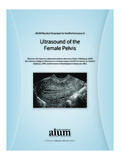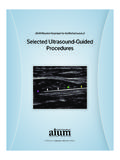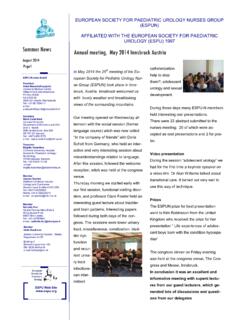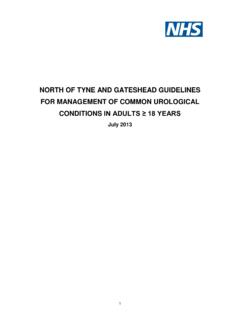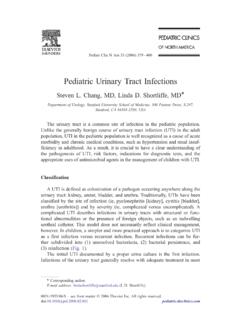Transcription of Ultrasound Examination in the Practice of Urology
1 AIUM Practice Parameter for the Performance of anUltrasound Examination in the Practice of Urology 2011 by the American Institute of Ultrasound in Medicine Parameter developed in collaboration with the American Urological 12/1/15 3:45 PM Page 1 The American Institute of Ultrasound in Medicine (AIUM) is a multidis-ciplinary association dedicated to advancing the safe and effective useof Ultrasound in medicine through professional and public education,research, development of parameters, and accreditation. To promotethis mission, the AIUM is pleased to publish, in conjunction with theAmerican Urological Association (AUA), this AIUM Practice Parameterfor the Performance of an Ultrasound Examination in the Practice ofUrology. We are indebted to the many volunteers who contributed theirtime, knowledge, and energy to bringing this document to AIUM represents the entire range of clinical and basic scienceinterests in medical diagnostic Ultrasound , and, with hundreds of volunteers, the AIUM has promoted the safe and effective use of ultra-sound in clinical medicine for more than 50 years.
2 This document andothers like it will continue to advance this mission. Practice parameters of the AIUM are intended to provide the medicalultrasound community with parameters for the performance and recording of high-quality Ultrasound examinations. The parametersreflect what the AIUM considers the minimum criteria for a completeexamination in each area but are not intended to establish a legal standard of care. AIUM-accredited practices are expected to generallyfollow the parameters with recognition that deviations from these parameters will be needed in some cases, depending on patient needsand available equipment. Practices are encouraged to go beyond theparameters to provide additional service and information as needed. 14750 Sweitzer Ln, Suite 100 Laurel, MD 20707-5906 USA800-638-5352 2011 American Institute of Ultrasound in 12/1/15 3:45 PM Page 2I.
3 IntroductionThe clinical aspects of this parameter (Introduction, Specifications for IndividualExaminations, and Equipment Specifications) were developed collaboratively by theAmerican Institute of Ultrasound in Medicine (AIUM) and the American UrologicalAssociation (AUA). Several sections of this parameter (Qualifications and Responsibilities ofPersonnel, Documentation, and Quality Control and Improvement, Safety, Infection Control,and Patient Education Concerns) vary between the organizations and are addressed by parameter has been developed to assist practitioners performing an Ultrasound examina-tion in the Practice of Urology . While it is not possible to detect every abnormality, adherenceto the following parameters will maximize the probability of answering the clinical questionprompting the study.
4 II. Qualifications and Responsibilities of PersonnelSee for AIUM Official Statements including Standards and Guidelines for theAccreditation of Ultrasound Practicesand relevant Physician Training Specifications for Individual ExaminationsDoppler Ultrasound may be useful to differentiate vascular from nonvascular structures in anylocation. Measurements should be considered for any abnormal Kidney and/or Bladder1. IndicationsIndications for an Ultrasound Examination of the kidney and/or bladder include but arenot limited to: Flank and/or back pain; Signs or symptoms that may be referred from the kidney and/or bladder regions suchas hematuria; Abnormal laboratory values or abnormal findings on other imaging examinations sug-gestive of kidney and/or bladder pathology; Follow-up of known or suspected abnormalities in the kidney and/or bladder; Evaluation of suspected congenital abnormalities; Abdominal trauma; Pretransplantation and posttransplantation evaluation; and Planning and guidance for an invasive AIUM Practice PARAMETER Ultrasound in the Practice of 12/1/15 3:45 PM Page 12.
5 Specifications for a Kidney ExaminationThe Examination should include long-axis and transverse views of the upper poles, midportions, and lower poles of the kidneys. The cortex and renal pelvises should beassessed. A maximum measurement of renal length should be recorded for both , prone, or upright positioning may provide better images of the possible, renal echogenicity should be compared to echogenicity of the adjacentliver or spleen. The kidneys and perirenal regions should be assessed for vascular Examination of the kidneys, Doppler imaging can be assess renal arterial and venous patency; evaluate adults suspected of having renal artery stenosis. For this application, angle-adjusted measurements of the peak systolic velocity should be made proximally,centrally, and distally in the extrarenal portion of the main renal arteries when peak systolic velocity of the adjacent aorta (or iliac artery in transplanted kidneys)should also be documented for calculating the ratio of the renal to aortic peak systolicvelocity.
6 Spectral Doppler evaluation of the intrarenal arteries from the upper and lowerportions of the kidneys, performed to evaluate the early systolic peak, may be of value asindirect evidence of proximal stenosis in the main renal Urinary Bladder and Adjacent StructuresWhen performing a complete Ultrasound evaluation of the urinary tract, transverse andlongitudinal images of the distended urinary bladder and its wall should be included, ifpossible. Bladder lumen or wall abnormalities should be noted. Dilatation or other distalureteral abnormalities should be documented. Transverse and longitudinal scans may beused to demonstrate any postvoid residual, which may be quantitated and Equipment SpecificationsKidney and/or bladder Ultrasound studies should be conducted with real-time scanners,preferably using sector or linear (straight or curved) transducers.
7 The equipment should be adjusted to operate at the highest clinically appropriate frequency, realizing that there is a trade-off between resolution and beam penetration. For most preadolescent pediatricpatients, mean frequencies of 5 MHz or greater are preferred, and in neonates and smallinfants, a higher-frequency transducer is often necessary. For adults, mean frequenciesbetween 2 and 5 MHz are most commonly used. When Doppler studies are performed, theDoppler frequency may differ from the imaging frequency. Diagnostic information shouldbe optimized while keeping total Ultrasound exposure as low as reasonably Reading1. Babcock DS, Patriquin HB. The pediatric kidney and adrenal glands. In: Rumack CM, Wilson SR,Charboneau JW, et al (eds). Diagnostic Ultrasound . 3rd ed. Philadelphia, PA: Elsevier Mosby;2005:1905 Baxter GM.
8 Imaging in renal transplantation. Ultrasound Q2003; 19:123 Hagen-Ansert SL. Introduction to abdominal scanning techniques and protocols. In: Hagen-AnsertSL (ed).Textbook of Diagnostic Ultrasonography. 5th ed. St Louis, MO: CV Mosby Co; 2001:42 AIUM Practice PARAMETER Ultrasound in the Practice of 12/1/15 3:45 PM Page WD, Kurtz AB, Hertzberg BS. Kidney. In: Ultrasound : The Requisites. 2nd ed. St Louis,MO: CV Mosby Co; 2004:103 Muradali D, Wilson SR. Organ transplantation. In: Rumack CM, Wilson SR, Charboneau JW, et al (eds). Diagnostic Ultrasound . 3rd ed. Philadelphia, PA: Elsevier Mosby; 2005:675 Siegel MJ. Urinary tract. In: Siegel MJ (ed). Pediatric Sonography. 3rd ed. Philadelphia, PA:Lippincott Williams 2001:385 Thurston W, Wilson SR. The urinary tract. In: Rumack CM, Wilson SR, Charboneau JW, et al (eds).
9 Diagnostic Ultrasound . 3rd ed. Philadelphia, PA: Elsevier Mosby; 2005:321 Prostate1. IndicationsIndications for a prostate Ultrasound Examination include but are not limited to: Guidance for biopsy in the presence of abnormal digital rectal Examination findings oran elevated prostate-specific antigen level; Assessment of gland and prostate volume before medical, surgical, or radiation therapy; Symptoms of prostatitis with a suspected abscess; Assessment of congenital anomalies; Infertility; and Specifications of the Prostate Ultrasound Examination The following parameters describe the Examination of the prostate and surroundingstructures:a. ProstateThe prostate should be imaged in its entirety in at least 2 orthogonal planes, sagittaland axial or longitudinal and coronal, from the apex to the base of the gland.
10 An esti-mated volume is determined from measurements in 3 orthogonal planes (volume =length height width ). The volume of the prostate may be correlated withthe prostate-specific antigen level. The gland should be evaluated for a focal mass, echogenicity, symmetry, and conti-nuity of margins. Color and power Doppler sonography may be helpful in detectingareas of increased vascularity that can be used to select potential sites for periprostatic fat and neurovascular bundle should be evaluated for symmetryand echogenicity. The course of the prostatic urethra should be documented, whenpossible, and asymmetry between left and right periurethral tissues as well as theirimpact on the base of the bladder should be Seminal Vesicles, Vasa Deferentia, and Perirectal SpaceThe seminal vesicles should be evaluated for size, shape, position, symmetry, andechogenicity from their insertion into the prostate via the ejaculatory ducts to theircranial and lateral extents.


